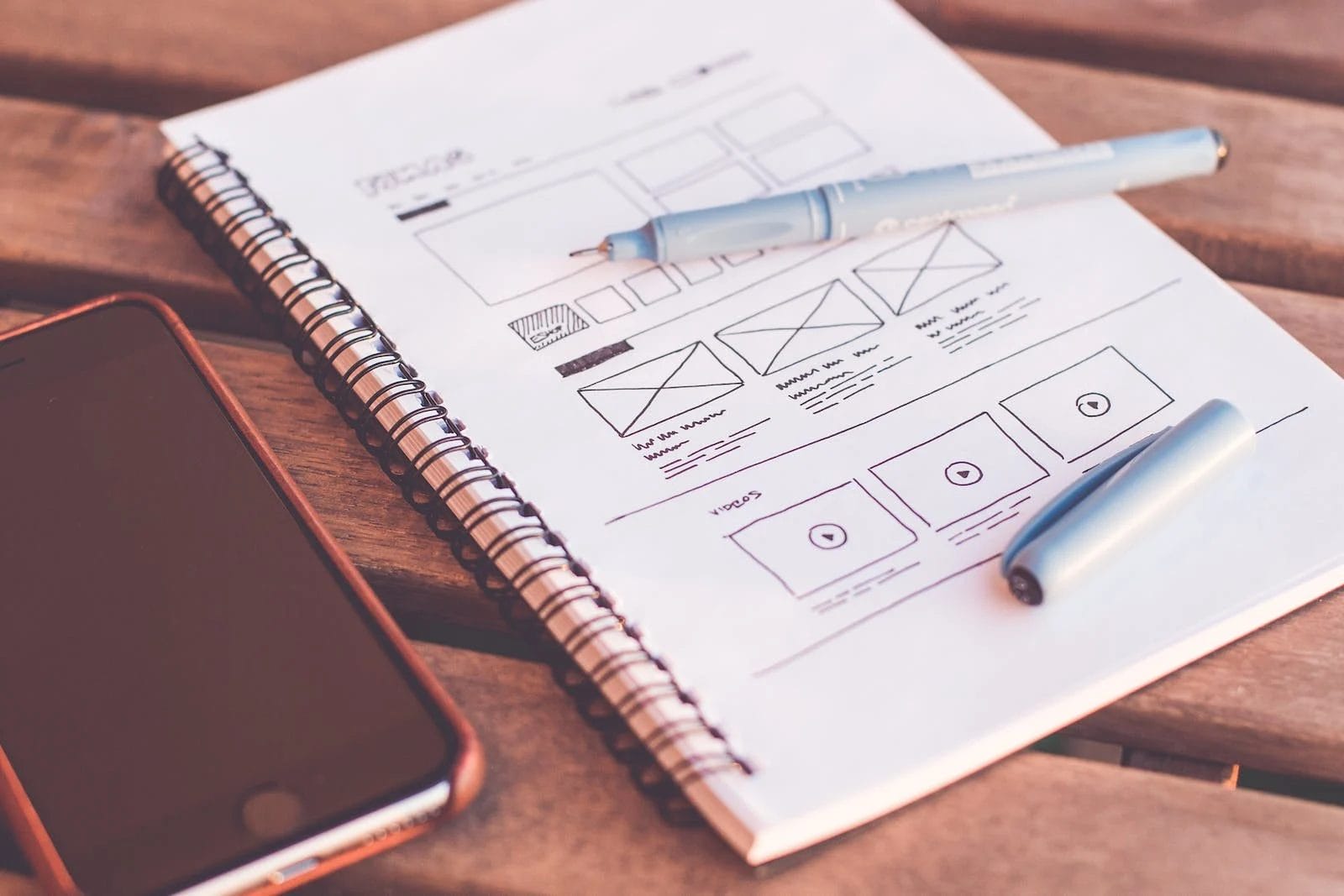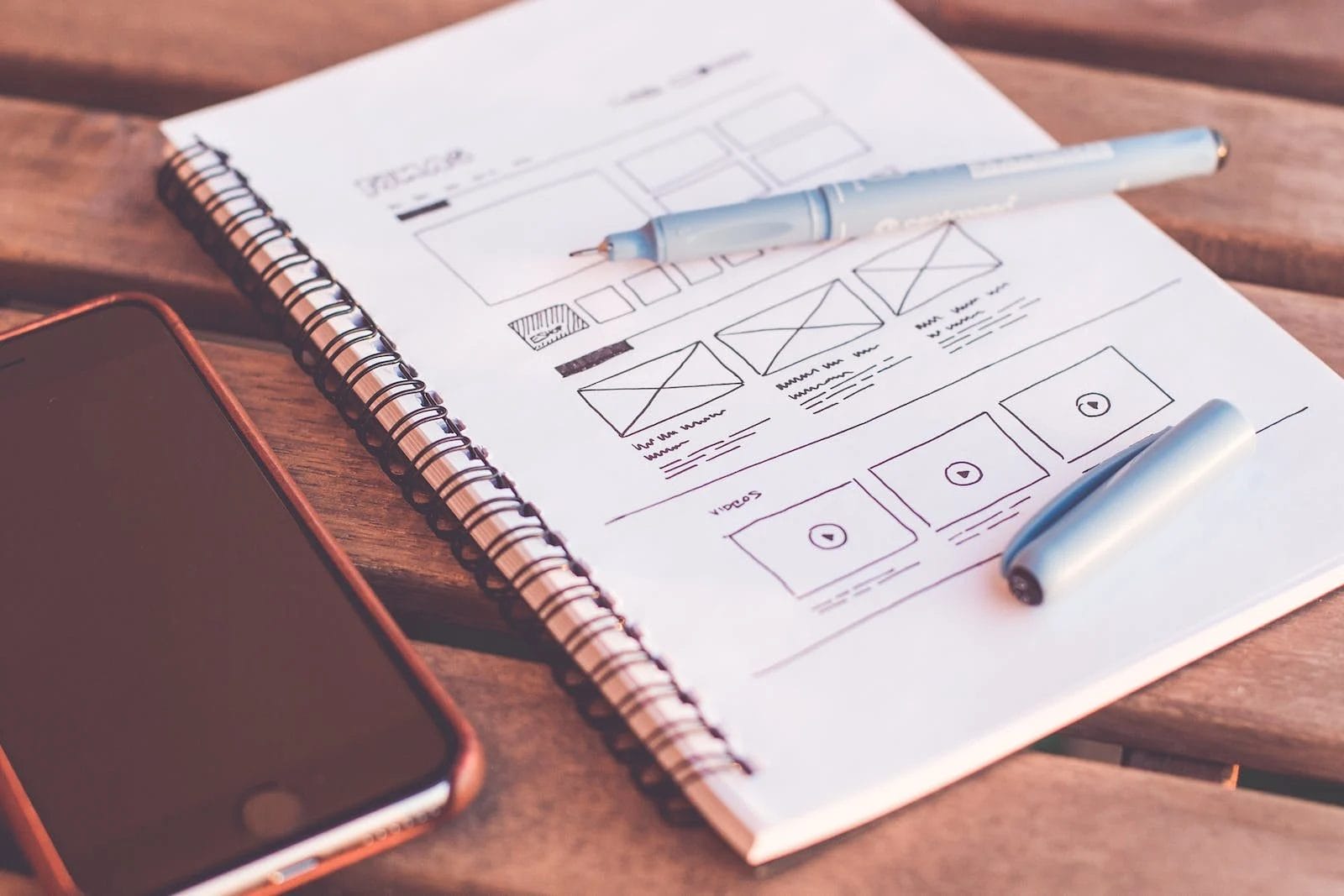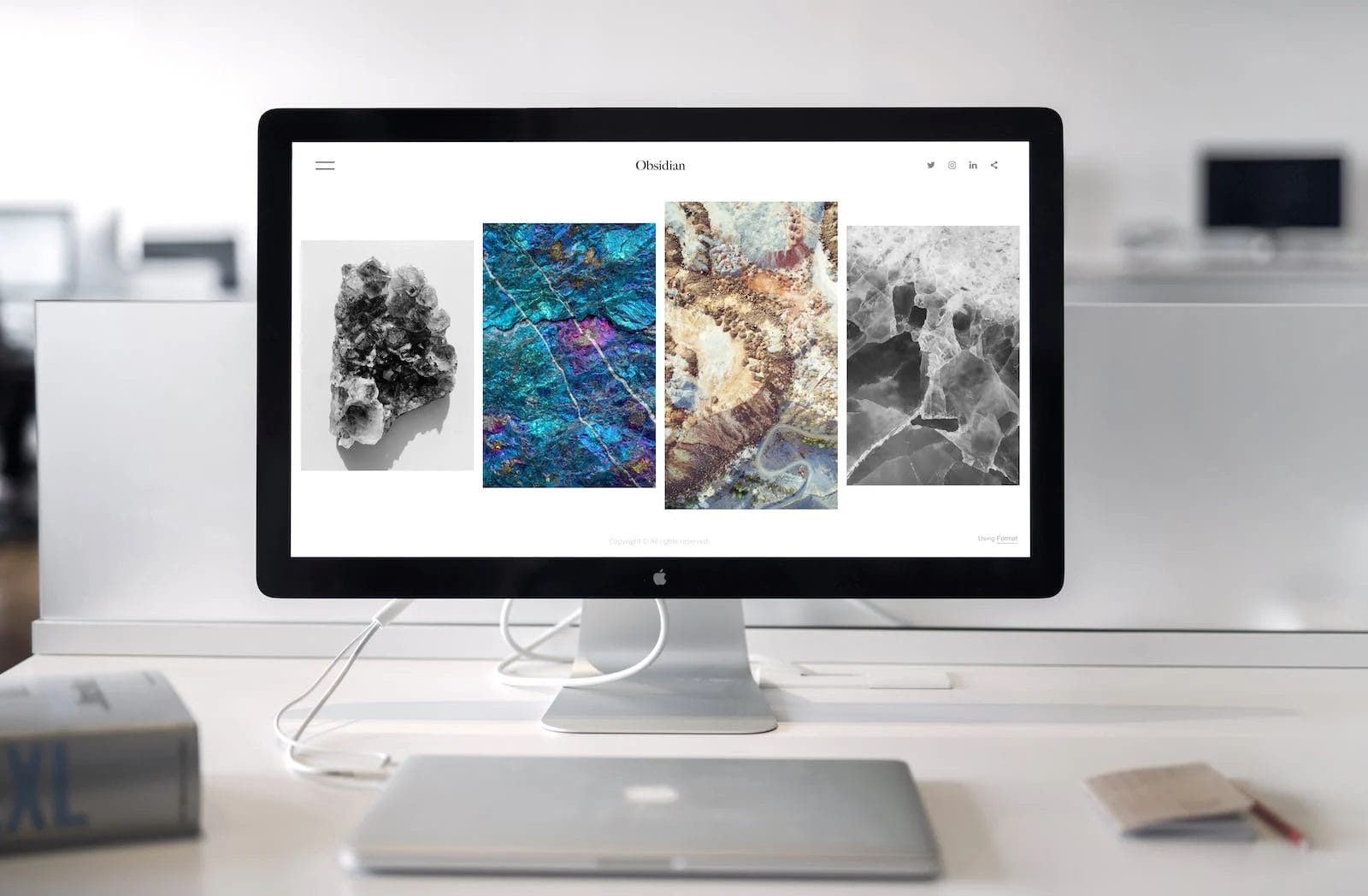How To Get Into Website Design–The Ultimate Guide To Becoming A Web Designer

Have you ever fantasized about harnessing your creative abilities to professionally create aesthetically pleasing websites? Do you find joy in the art of crafting websites that captivate and thrill users? Are you aspiring to become a part of the elite group of accomplished web designers? The journey to becoming a web designer may appear daunting, but it doesn’t have to be. All you require is the proper mindset, tools, and commitment. Anyone with a passion for web design can make a game-changing contribution in this industry. Let me introduce you to the ‘How To Get Into Website Design—The Ultimate Guide To Becoming A Web Designer’.
This guide will equip you with all the knowledge and skills required to take your first steps into the world of website design. You’ll learn from experienced professionals who are passionate about helping others achieve their dreams of becoming an effective web designer. We’ll cover everything from choosing the right tools and platforms to developing the essential skills needed for success in this industry. So if you’re ready to embark on your journey towards becoming a professional website designer, let’s get started!
Fundamental Principles Of Website Design Every Web Developer Should Know
Are you ready to get into web design? It’s an exciting endeavor that can lead to a career in a rewarding field. But before you dive in, it’s important to understand the fundamental principles of web design. Every aspiring Web designer should be familiar with these essential concepts in order to create successful websites.
Web design is much more than coding and plugging elements onto a page; it’s an art form that requires knowledge of various principles, such as color theory, typography, user experience (UX), and accessibility. These components work together to create an engaging experience for users. A great web designer must understand all these elements and how they interact with one another. Freelance web designer also needs to be proficient in programming languages like HTML, CSS, and JavaScript to build out the structure of their websites.
With a good grasp of what web design entails and the basics behind it, you’re now ready to tackle your next challenge—getting started creating websites!
What Do You Need To Get Started With Creating Websites?

Getting started with web design may seem daunting at first. But, don’t worry – with the right tools and skills, you can become an expert web designer. Here’s what you need to know:
To get started, you’ll need to equip yourself with the web design tools and materials. This may include graphic design software, such as Adobe Photoshop or Illustrator; HTML/CSS coding programs; and FTP clients for uploading files to a server. You’ll need to gain an understanding of basic design principles such as typography, color theory, page layout, and user experience (UX).
To hone your design skills further, consider investing some time in learning about responsive design techniques which enable websites to adapt their layouts based on the device they’re being viewed on. You should also know the latest trends in web development so that your designs stay on-brand and up-to-date.
You’re well equipped with the foundational knowledge required for creating amazing websites. Now it’s time to take your skills to the next level by becoming a pro at web design with four essential skills you need.
Become A Pro At Web Design With 4 Essential Skills You Need

So you want to be a web designer? That’s great news! Becoming a web designer is a rewarding career that can open up many opportunities. But what skills do you need to become a pro?
Well, the most important skills for any web designer are knowledge and experience in HTML, CSS, JavaScript, and design tools. With these four essential skills under your belt, you can create stunning websites with ease. Knowing how to use HTML and CSS for structuring and styling content is essential for creating engaging user experiences. As for JavaScript, this powerful language is used to add interactivity and dynamic features to websites. Most designers also need to be familiar with design tools, such as Photoshop or Sketch, in order to create visuals for their projects.
These four areas together form the foundation of any effective web designer’s skill set. Even if you don’t know everything yet, committing yourself to learning these core concepts will give you an immense advantage when it comes time to build websites. Now that you know what it takes to become a web designer, let’s look at the pros and cons of working as a freelance vs traditional web designer.
Weighing The Pros & Cons Of Working As A Freelance Vs A Traditional Web Designer

Weighing the pros and cons of working as a freelance vs. a traditional web designer is an important decision to make when becoming a professional in this field. Are you ready to learn what it takes to be successful in each?
If you’ve ever dreamed of becoming a freelance web designer, then you know the feeling of taking the leap and starting your own business. But is that the right choice for you? There are plenty of benefits to working as a freelance web designer, such as not having a boss, setting your own hours, and pursuing projects that interest you. However, there are also some drawbacks, like having to find clients and manage your own taxes.
If you prefer more stability and structure, then finding a web designer job at an established company might be better for you. This type of job will provide you with regular salary, health insurance benefits, and the potential to advance within the organization. But it may come with longer hours or less control over project decisions.
It’s up to you to decide which type of work best suits your lifestyle and career goals. Whichever route you take, understanding different websites and applying unified design theory for each will be key components for success!
4 Different Websites & Advice On How To Apply Unified Design Theory For Each

A world of opportunity awaits those with the ambition and technical know-how to pursue a career in User Interface (UI) design. In this ultimate guide, we explore the various websites out there and how to apply unified design theory to create an effective website. Let’s dive into the depths of web design online!
From blogs and portfolios to eCommerce stores and membership sites, there are countless possibilities in designing a website. Each type requires its own unique approach and understanding of Creative problem-solving, but it should unify all in their overall aesthetic. Here’s what you need to know:
• Blogs: A blog is an online space where users can read or comment on content. To create a successful blog, it should focus your designs on readability and navigation.
• Portfolios: An online portfolio is used to showcase a designer’s work samples and skill set. When designing for portfolios, emphasize visuals that highlight your best work while providing easy access for potential employers or customers.
• Ecommerce Stores: An eCommerce store provides users with the ability to purchase products from you or your clients’ websites. When creating such designs, pay close attention to product descriptions, images, checkout process flow, and payment options for a smooth customer experience.
• Membership Sites: A membership site allows users who have paid access to exclusive content on your website through registration forms or subscription plans. Effective membership sites have clear calls-to-action that register new members while ensuring the security of user data at all times.
By applying these fundamentals of web design online, you’ll be able to create experiences that are both appealing and navigable through unified design theory—no matter what type of website you’re creating!
Can Stunning Page Curl Effects Improve the SEO of a Website?
Boost seo with stunning page curl effects! Incorporating visually appealing elements like page curl effects can enhance user experience and increase engagement, potentially improving the SEO of a website. By captivating visitors and encouraging them to explore further, these effects can help decrease bounce rates and increase time spent on the site, leading to better search engine rankings. So, consider adding these eye-catching page curl effects to optimize your website’s SEO.
What are Some Examples of Well-Designed News Websites?
Some of the best designed news websites include The New York Times, CNN, and BBC News. These platforms prioritize user experience through sleek layouts, intuitive navigation, and visually appealing elements. With well-organized content, engaging typography, and responsive designs, these websites offer readers a seamless and enjoyable news browsing experience.
Is Learning Website Design a Necessary Skill for Using a Content Management System (CMS)?
Understanding CMS in web design is crucial for effectively utilizing a content management system. Learning website design might not be a prerequisite, but it certainly enhances your capability to navigate and customize CMS platforms. With a solid grasp of CMS principles, users can optimize website functionality and content creation, ultimately improving their online presence.
Put Yourself Out There To Create Lasting Impressions And Find Opportunities In The Field Of Web Design

Did you know that the Bureau of Labor Statistics predicts web design jobs will grow 13 percent from 2018 to 2028? That’s much faster than average, so if you want to create a successful career in web design, now is the perfect time. To put yourself out there and make lasting impressions in web development, here are some strategies you can use:
• Build your UX Designer skills: become well-versed in all aspects of UX design, such as user research, information architecture, and UI prototyping. Developing a deep understanding of these topics will help you stand out from other web designers.
• Create a stunning Web Design Portfolio: An impressive portfolio is essential for getting hired as a web designer. Your portfolio should showcase your best work and highlight any projects that have been successful. Make sure it is appealing and easy to navigate.
• Network and connect with others: Networking can help you build relationships with potential employers or clients. Attend industry events or join online communities to stay up to date on the latest trends and hear about job opportunities. Don’t be afraid to share your work on social media platforms – this can lead to more connections and recognition for your work.
By using these strategies, you can create an edge over other designers vying for web design jobs. Putting yourself out there is the key to success; start by building your skill set, creating an eye-catching portfolio, and networking with like-minded professionals who can help propel your career forward!
Frequently Asked Questions
What Is The Difference Between A Web Developer And A Web Designer?
Web design is one of the most sought-after career paths today. According to recent statistics, the number of web developers and web designers has grown by over 7% in the past year alone. So, what’s the difference between a web developer and a web designer?
A web designer focuses on creating a pleasing layout for websites using various tools, such as HTML, CSS and JavaScript. The goal is to create an attractive interface for users that will make them want to explore further. A Web designer uses coding languages such as PHP and SQL to build functionality into a website from scratch. They build databases and programming languages that will power the site.
Although they have similar skillets, it’s important to note that there are distinct differences between these two roles. For example, a web designer will focus on user experience (UX), while a Web designer must be proficient in problem solving and technical development. While both positions require knowledge of programming languages, they prioritize unique skills, depending on their respective roles. Becoming an expert in both areas is essential if you want to become a successful website designer or developer.
How Much Money Can I Expect To Make As A Web Designer?
Are you considering a career in web design? If so, you’re likely wondering how much money you can make as a web designer. The amount you earn depends on many factors. With luck, hard work, and dedication, it could set you for life with a lucrative web design career.
The potential for making good money as a web designer is real. You could earn top dollar to create stunning websites that leave lasting impressions on viewers. Plus, when you gain experience, you can expect to command higher rates and take on more challenging projects that pay. To make it big in the world of web development, it’s important to keep up with the latest trends and technology—but don’t worry; there are plenty of resources available to help you stay ahead of the game.
Money isn’t everything, though; becoming a web designer also offers people around the world will see an opportunity to express your creativity and build something lasting that. With ample financial rewards and plenty of room for self-expression, web development can offer an exciting and fulfilling career path.
What Is The Most Important Skill Needed To Be Successful In Website Design?
Becoming a successful web designer requires more than just technical coding skills; it also involves problem-solving abilities and creative thinking. Understanding the right qualifications and certifications needed to be a successful web designer is paramount to becoming an industry leader. With the right combination of knowledge, expertise, and dedication, any individual can learn to design beautiful websites that stand out from the competition.
For those pursuing a career in web designing, it’s important to understand the skillset and qualifications involved. While creativity plays a significant role in creating successful websites, having knowledge in coding languages such as HTML, CSS and JavaScript is essential for being able to design efficient and interactive sites. In addition, excellent communication skills are required for not only interacting with clients but also working with other designers on projects. Whether through college degrees, online courses or self-training, there are plenty of resources available to help to aspire web designers hone their craft.
Advanced understanding of design trends and elements such as user experience (UX), user interface (UI), typography, color schemes, responsiveness among others can all work towards enhancing one’s ability as a web designer. Being aware of SEO fundamentals will help improve website ranking while gaining exposure to search engines. By taking advantage of such tools, an aspiring web designer can use these techniques as powerful marketing strategies when presenting their portfolio to potential employers or clients.
The path to becoming an expert web designer may feel like an uphill battle at first–but with the right knowledge base and dedication, anyone can become successful in this field! Keeping up-to-date with the latest technologies and trends is integral for success and so is combining both technical coding skills with people skills to build meaningful relationships with colleagues or clients. With hard work and determination, anyone can develop into an exceptional web designer!
What Is The Best Way To Market Myself As A Web Designer?
The journey to becoming a web designer is exciting, full of possibilities and opportunities. As a web designer, it’s important to understand the best way to market yourself in order to stand out from the crowd. Achieving this requires creativity, dedication, and the right set of skills.
Symbolism can offer great insight into how to market yourself as a web designer. It involves conveying your message through images and ideas that evoke an emotional response in the audience. Here are three ways you can use symbolism to help you become a successful web designer:
• Demonstrate Mastery: Showcase your skills and knowledge by creating something unique that reflects your level of expertise.
• Connect with Your Audience: Use symbols that resonate with your target audience and make them feel connected to you and your work.
• Tell Your Story: Share your story through visuals, words, or both; this will help create an emotional bond between you and potential clients.
Learning how to advertise yourself as a web designer is just as important as having the technical skills for the job. It takes time and effort, but it’s worth it—having the ability to promote yourself can open up doors for new opportunities. You’ll be able to take control of your own success by promoting your services in a way that speaks to those who need them most. The right marketing tactics will ensure that people know who you are and what you offer — taking the first step toward becoming an established web designer!
Conclusion
The journey to becoming a web designer is one of the most rewarding and exciting paths you can take. With the right skills, knowledge, and dedication, you can make great strides in your career. It’s important to remember that web design isn’t just about coding; it also involves being creative, understanding user experience, and having a knack for marketing yourself.
With all the resources out there, there’s no excuse not to pursue this career path if it sparks your interest. I’m certain that with hard work and dedication, anyone could become an amazing web designer. So don’t be afraid to take the plunge; with a little of courage and perseverance, you can reach heights you never imagined were possible!
Embrace the challenge of web design—it’s a rewarding profession where every day brings something new and exciting. Let go of any fear or hesitation you may have and take the leap into this ever-develop industry with confidence!





